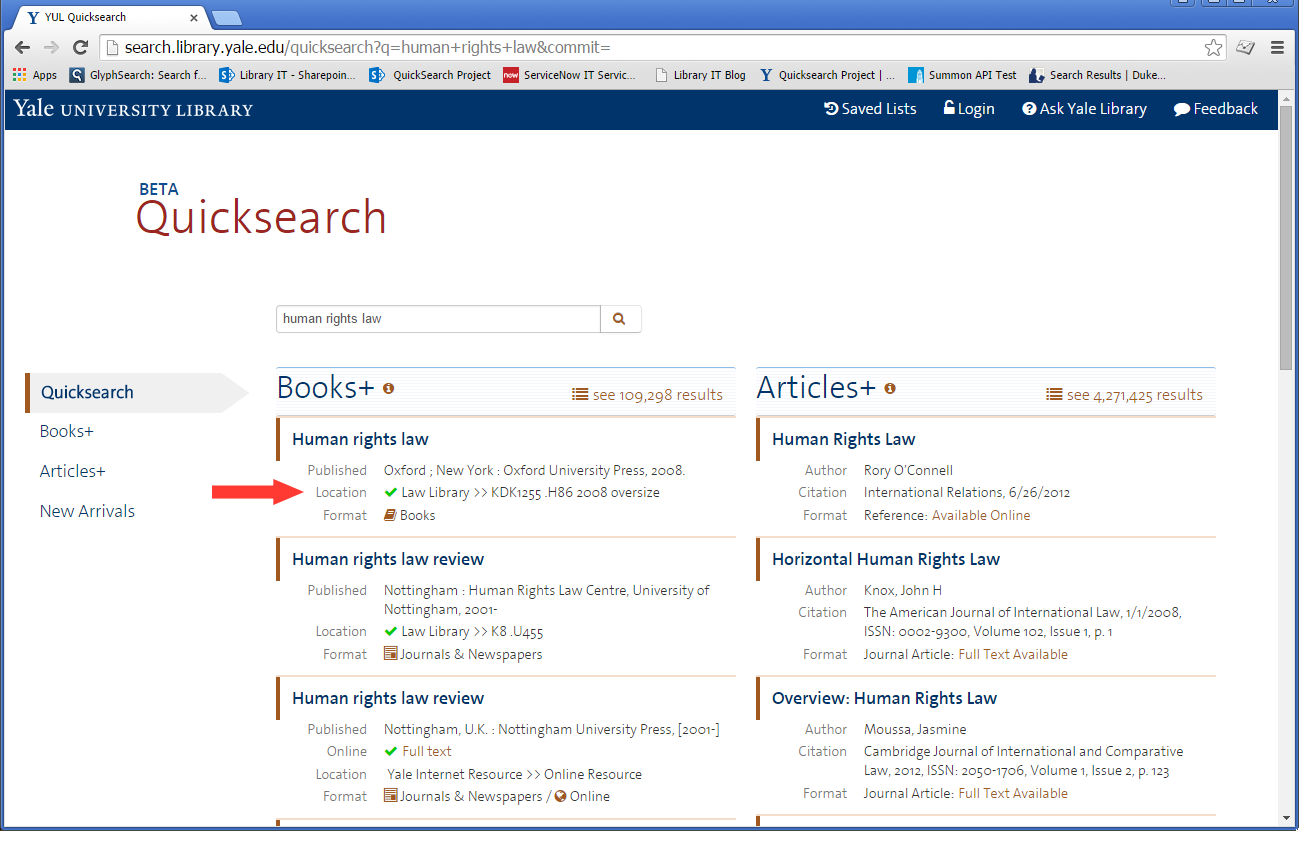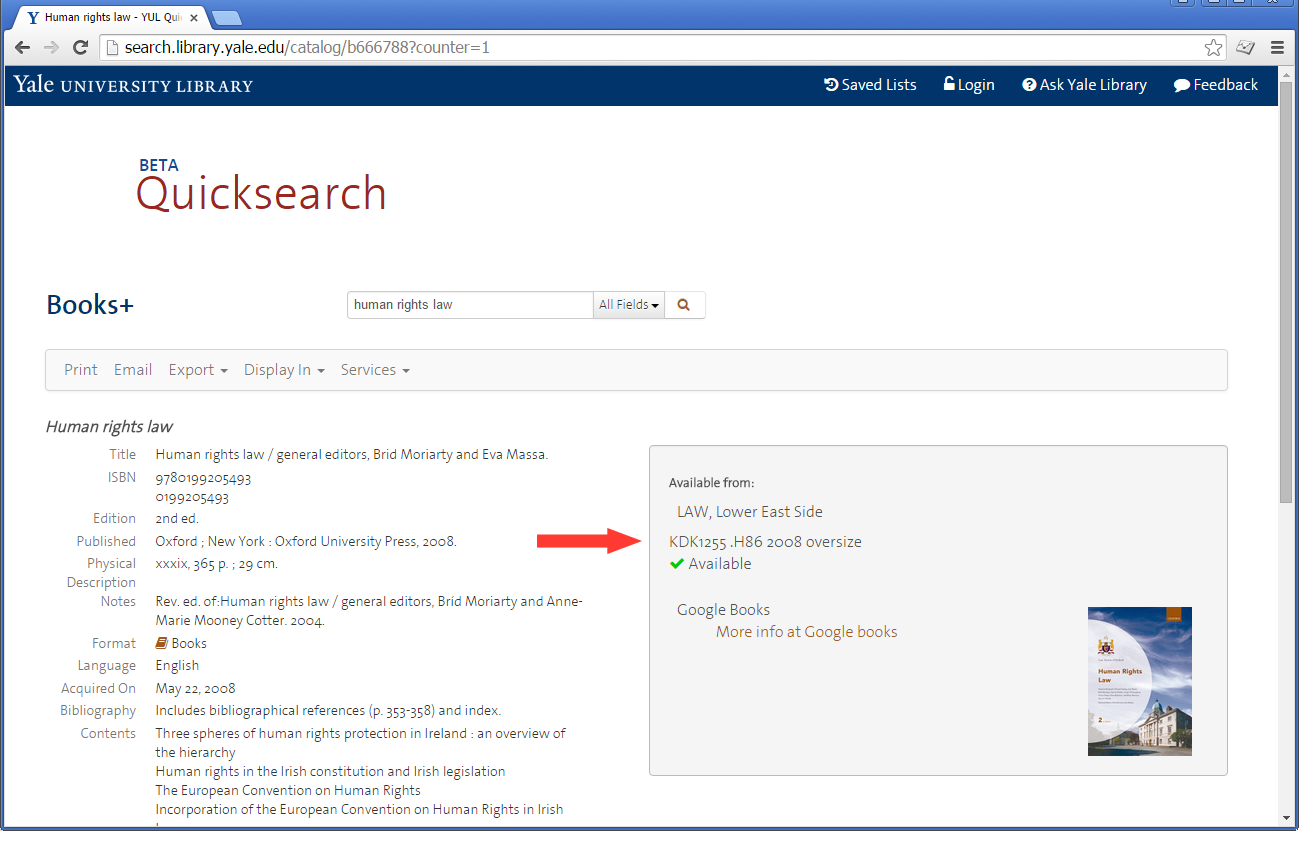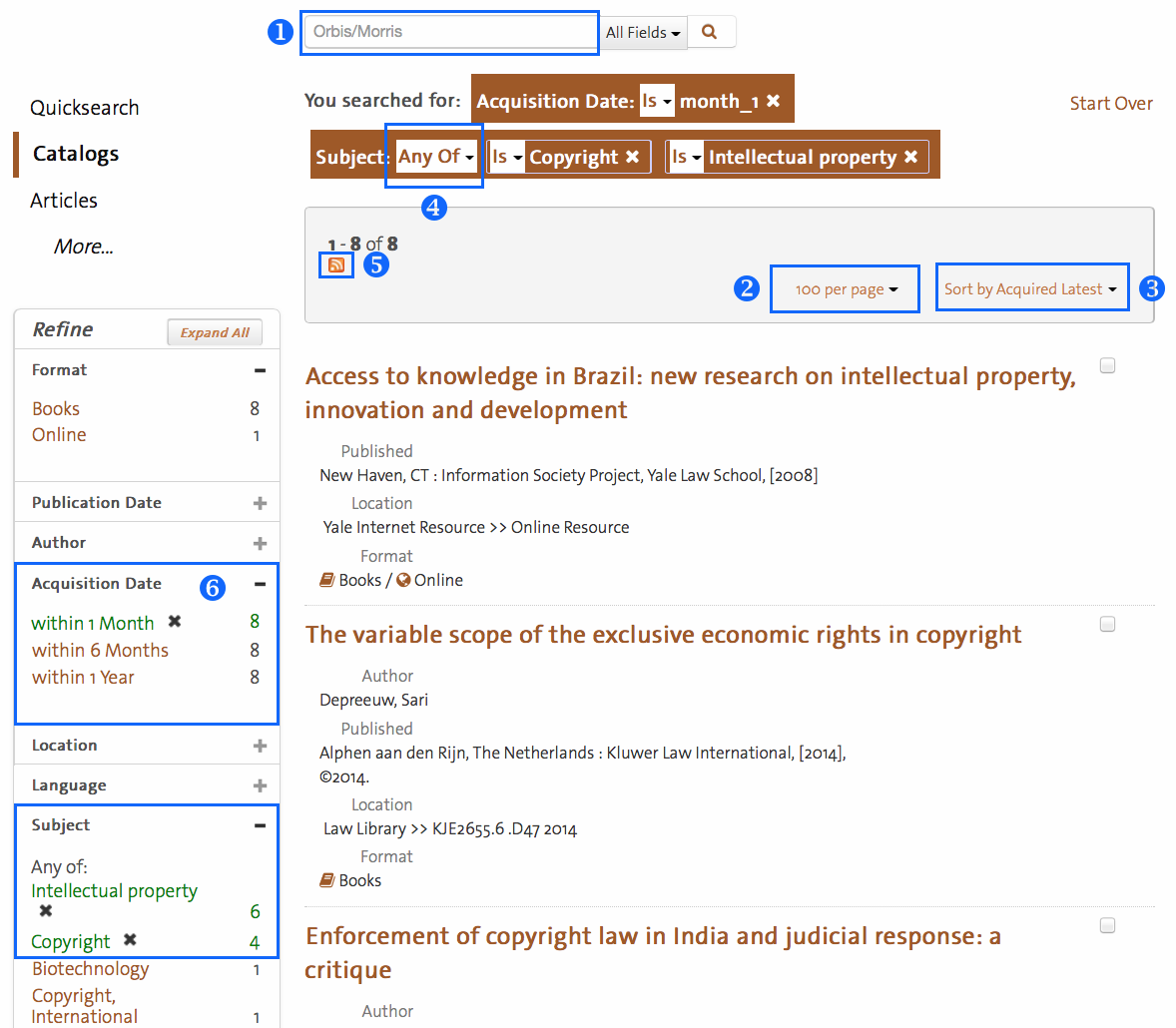New documentation for Quicksearch is now available on the Cataloging @ Yale site, under Discovery Systems Documentation. This documentation is aimed at librarians and staff, and answers questions such as:
When I search “Author”, what MARC fields am I searching? (Quicksearch Search Indexes)
Where do the facet terms come from? (Quicksearch Facet Indexes)
Why are all the RDA records at the end when I sort results by publication date? (Quicksearch Sort Indexes)
How does Quicksearch decide which format terms to assign to a resource? (Quicksearch MARC Format Mapping)
I made a change in Orbis…when can I expect to see it in Quicksearch? And how can I make sure my record won’t fail to ingest into Quicksearch? (How and When Cataloging Data Appears in Quicksearch)
Why aren’t all my search terms in some of my results? And what special syntax can I use to improve my searches? (Quicksearch Expert Search Tips)
What really happens when I click the search button in Books+? And how does the Quicksearch relevancy ranking work? (Technical Overview of Searching in Quicksearch and Books+)
How can I keep up to date with Quicksearch developments? (Quicksearch Project Blog)
Where do I point patrons for more information? (Public Quicksearch Help Site) (work in progress)
Many thanks to Dominique Bourassa for transforming these documents into Drupal, the members of the Books+ Search Analysis Working Group for their work on documenting the Quicksearch Solr indexes, and attendees of SearchFest for informing this documentation through their presentations and questions!



